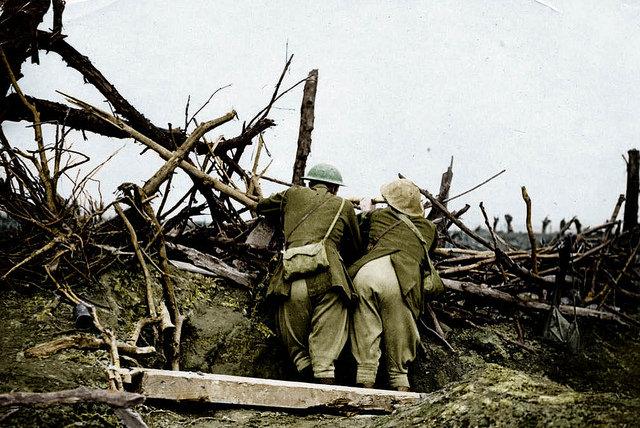
The recent commemoration ceremonies in Britain and France on 1 July marked the 100th anniversary of the worst military disaster in British history. On that day in 1916, a large force of 13 British divisions and 5 French divisions launched a combined assault against fortified German trenches in the Somme region of France. From early morning, waves of British troops left their trenches and advanced across no man’s land, in many places directly into heavy German machine-gun fire. By the day’s end, the British had suffered over 57,000 casualties, including almost 20,000 dead, all for little measurable gain. The shock of this tragic loss is still felt today; the causes of the disaster and those accountable continue to be debated.
The British commander-in-chief General Sir Douglas Haig generally receives most of the opprobrium. Haig had conceived the plan for a large-scale attack by British and French forces across a wide front to capture the German trench system and breach the defences which had long deadlocked the trench warfare on the Western Front into a stalemate. But from February, when the French came under increasing pressure from a relentless German attack on the fortress city of Verdun, the main responsibility for the Somme offensive shifted to the British. The attack proceeded, but with fewer troops and hasty preparation. These deficiencies were compounded by failures of weapons systems, tactics, and intelligence about the state of the enemy.
The infantry attack on 1 July was preceded by a week-long artillery bombardment in which the British guns fired 1.5 million shells onto the German trench systems and their defences. This deluge of shrapnel and high explosive was intended to inflict carnage, destroy the German trenches and bury their occupants; it was also confidently assumed the shells would destroy the German barbed wire obstacles in front of their trenches. The artillery failed in all of these aims. The German trench systems contained deep, secure dugouts which provided safe shelter from most of the artillery rounds, many of which were duds and failed to explode while others were the wrong type of projectile and inadequate for the task. And the barbed wire remained largely uncut.
At 7.30 am, ‘Zero Hour’, on 1 July the British infantry soldiers, heavily laden with up to 60 pounds of equipment, went ‘over the top’ to advance steadily towards the enemy lines. They were to follow a ‘creeping barrage’ of artillery fire that would screen them from German retaliatory fire but in most places the barrage moved ahead of them too quickly, offering no protection and allowing the German defenders to clamber up from their deep dugouts to what remained of the parapets of their trenches.
The battle quickly became a ‘race for the parapet’ in which the British soldiers had to cross hundreds of metres of no man’s land, cratered with shell holes and littered with the snares of uncut barbed wire—while the German soldiers had to scale their dugout steps, mount and assemble their machine-guns and prepare their fields of fire. It was a race the Germans were mostly bound to win.
However, the popular image of British soldiers, many of them inexperienced volunteers of the newly-raised Kitchener armies, being mown down as they advanced stolidly into fire, distorts the reality. In many parts of the German front line, the British succeeded in entering and seizing the trenches after fierce, close-quarters fighting with bayonets and grenades. The day would end though in a British withdrawal and demoralisation amongst the troops. In England, the public would be shocked at the arrival of thousands of wounded and the lengthening weekly casualty lists published by the government and in national newspapers, a practice that was only stopped in late 1916.
This was just the first day of a battle that lasted for 141 days. Over the following four months the Somme became a gruelling campaign that drew in some 55 infantry divisions to fight across a front of almost 30 kilometres. Three weeks after the campaign began, Australian divisions also began to join the battle, fighting their way along Pozières Ridge in a relentless ordeal that lasted six weeks. Nearly 7,000 Australian soldiers lost their lives during the battle of the Somme. Australia’s allies suffered tens of thousands more. As winter approached and the inconclusive battle finally drew to a close, the allied front line had been advanced no more than 12 kilometres at the cost of some 1.2 million casualties on both sides.
But the war would go on. This first battle of the Somme was the midpoint in a war that would finally end with the allied victory over two years later in November 1918. And the carnage on the Somme would continue again before that victory came.
Many families throughout the United Kingdom still recall, down the generations, the memories of those who died or were reported missing on the Somme. On 1 July, thousands participated in church vigils and commemorative ceremonies across Britain and descendants attended a major ceremony at the Thiepval Memorial in France which bears the names of more than 72,000 servicemen who have no known graves.